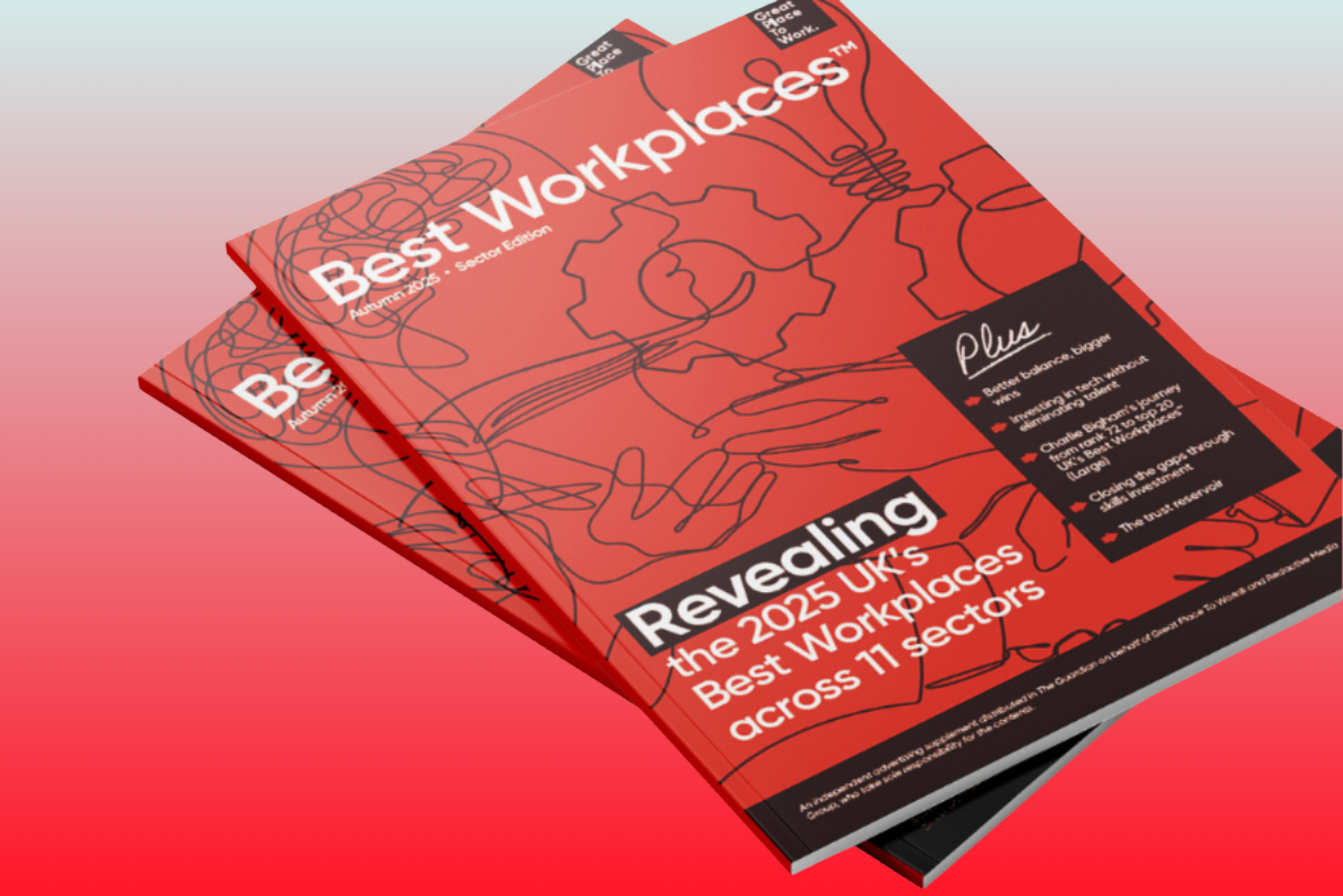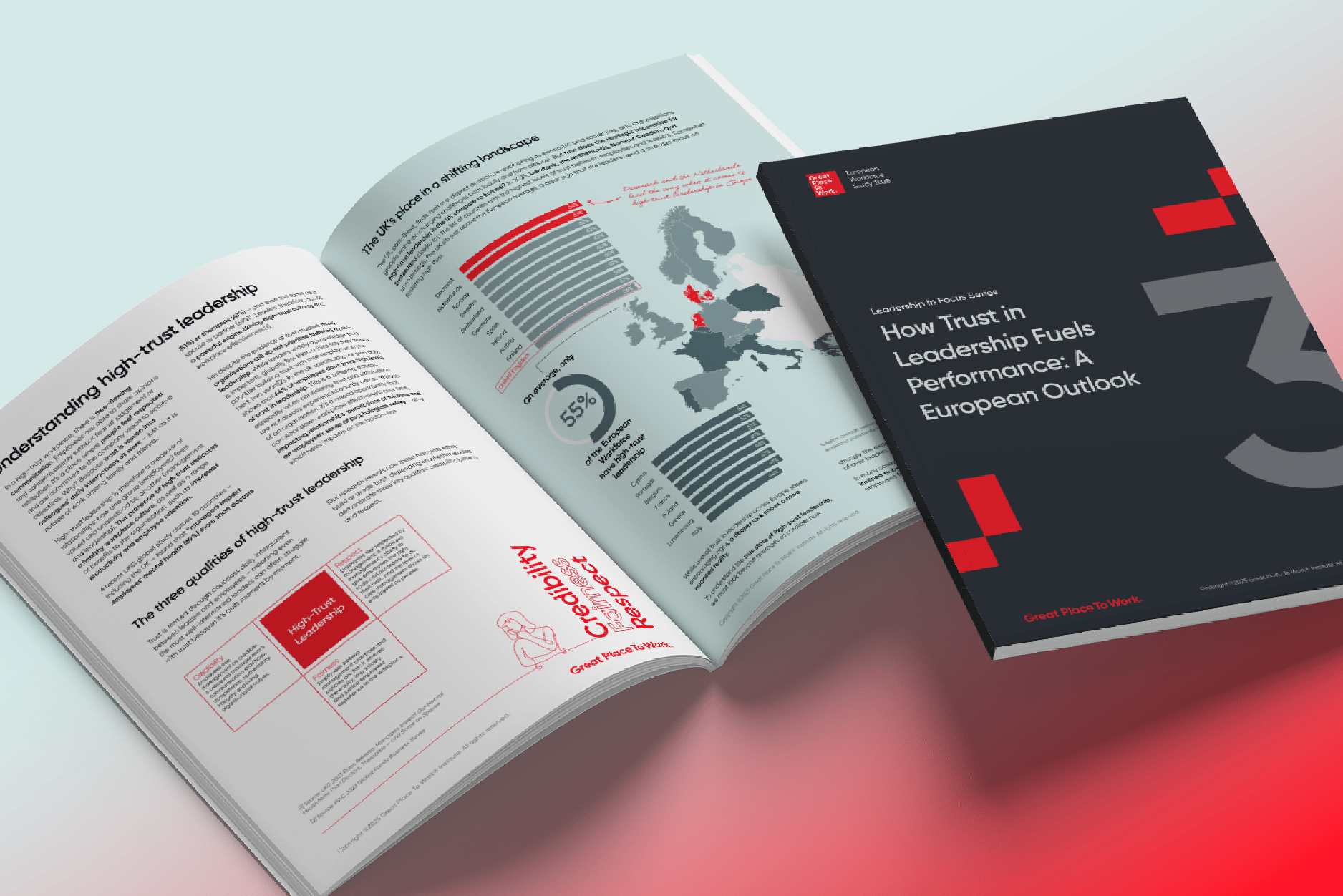
Fostering Wellbeing at Work in the UK: 2025
A new five‑year study from Johns Hopkins University and Great Place To Work® reveals a troubling decline in employee wellbeing across the UK. Under‑35s, frontline managers and men have been hit hardest.
Based on data from over 300,000 employees, this report shows how pandemic aftershocks, economic uncertainty and AI‑driven changes continue to shape the state of wellbeing in the workplace.

Download the 2025 report to understand the key trends, challenges and actionable insights.
The leading UK sectors for wellbeing in the workplace
We collected data from employees across key UK sectors and evaluated them using our Extended Wellbeing Index. This Index measures holistic workplace wellbeing across areas such as Interpersonal Relationships, Job Design & Fulfilment, Work-Life Balance, Psychological Safety, Mental, Physical & Financial Health, and General Evaluation of Wellbeing. Each sector received a Extended Wellbeing Index score and was ranked from highest to lowest based on their overall wellbeing experiences.
Results At A Glance
Key Findings into Wellbeing at Work in the UK
01
Employee wellbeing peaked in 2020, but has declined steadily since, especially among under-35s and frontline managers.
After reaching their highest levels at the start of the pandemic, wellbeing trends have gradually regressed from their peak, though they still remain above pre‑2020 levels. This shift reflects workplaces adapting to new remote and hybrid norms, while others return to more traditional office‑based ways of working.

02
Frontline managers are under the most pressure, with stress levels higher than both executives and individual contributors.
Frontline managers’ wellbeing levels align more closely with those of individual contributors than with senior leaders, highlighting the “squeezed middle” phenomenon. Caught between demands from above and below, often with limited autonomy and empowerment, this group consistently reports the highest levels of job‑related stress.

03
Sectors like tech and professional services – once wellbeing leaders – are now in decline.
After years of strong performance, both the tech and professional services sectors have seen a gradual drop in employee wellbeing. In tech, ongoing restructures, layoffs, and a shift towards AI and digital investment have reshaped priorities. Meanwhile, professional services has been influenced by digital transformation, shifting workforce expectations, and changing client demands.

Featured Articles
Additional Wellbeing Insights


